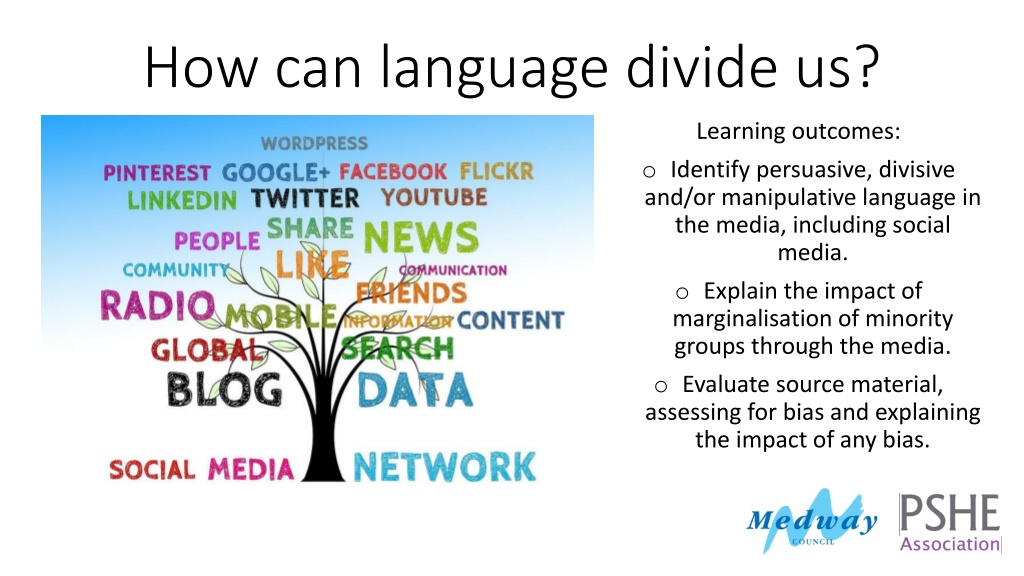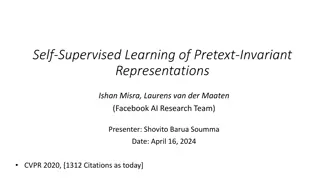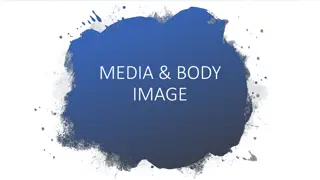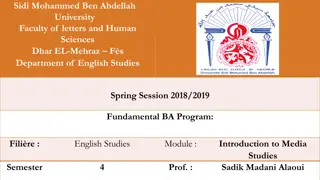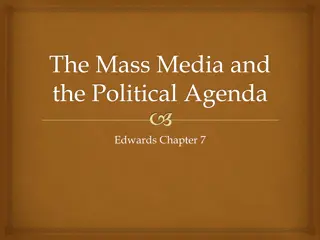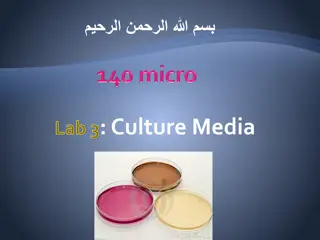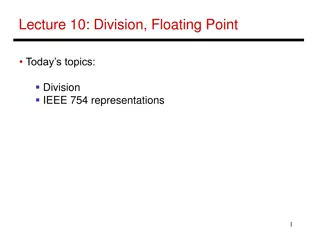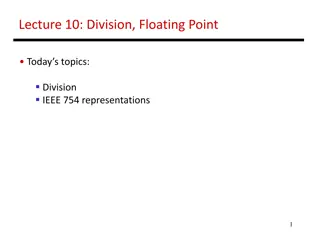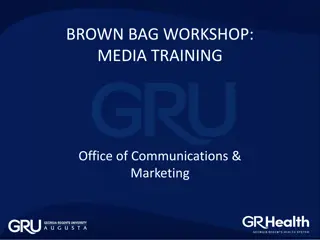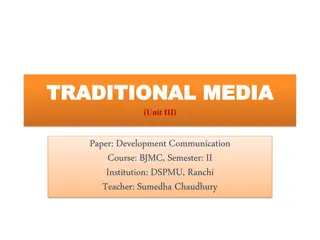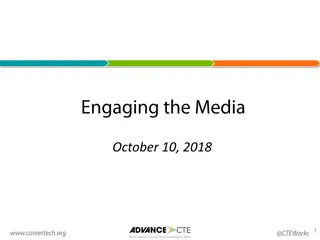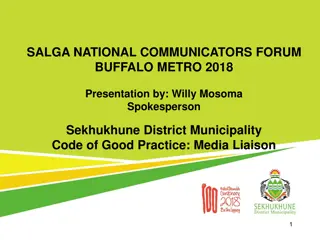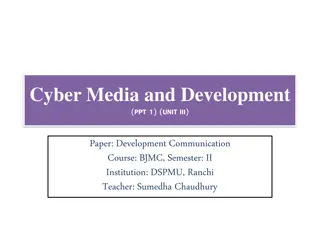Understanding Language Division in Media Representations
Explore the impact of language in media on marginalization, bias, and divisive perspectives towards minority groups. Reflect on the portrayal of different groups such as teenagers, city bankers, and migrants, and consider how language influences societal divisions and extremist views. Evaluate the role of media in shaping perceptions and consider methods to address the sense of division and alienation in communities.
Download Presentation

Please find below an Image/Link to download the presentation.
The content on the website is provided AS IS for your information and personal use only. It may not be sold, licensed, or shared on other websites without obtaining consent from the author. Download presentation by click this link. If you encounter any issues during the download, it is possible that the publisher has removed the file from their server.
E N D
Presentation Transcript
How can language divide us? Learning outcomes: o Identify persuasive, divisive and/or manipulative language in the media, including social media. o Explain the impact of marginalisation of minority groups through the media. o Evaluate source material, assessing for bias and explaining the impact of any bias.
Thinking about last lesson Is it really sustainable for a whole generation to feel that to earn the right to fully belong in this country, a lifetime of being British is apparently not enough? [Guardian journalist Afua Hirsch] What does it mean to have a British identity? Can a person have more than one identity? Is there a division in society due to race and religious discrimination? How might a sense of division and alienation lead to extremism? How can individuals work to end the sense of division that some feel in our community? Do you think that a journalist posing this question is helping society or is having a negative impact why?
Perceptions and representations of different groups How are teenagers who commit crimes, city bankers, migrants and terrorists represented in the news? What do you think is the truth about those minority groups?
Portrayal of teenagers in relation to crime The media portrays young people more negatively than positively, which leads to the public forming an unbalanced perception of the behaviour and attitudes of young people. Negative reporting causes a greater fear of the issue than the actual reality of the reported problem and enhances stereotyping. Imbalanced negative portrayal of young people in the media has a damaging effect on young people and the community in which they live. For example, 18 out of 225 murders involved teenagers with knives but this was not proportional to the level of concern amongst the public. Greater focus on teen vs teen violence, even though this is the least likely form of knife violence. The media tended to hype teen knife crime by constantly referencing other similar crimes despite there being no link between them. Student fees march was labelled riots due to the poor behaviour of a select few. The Hertsmere Young Researchers Team
Portrayal of city bankers 94% of those surveyed believe the UK retail banking sector is negatively or very negatively portrayed by the media. 71% of respondents believe there is a degree of hysteria in the media s portrayal of the UK retail banking sector. A researcher tracked 7 new recruits to banking firms. He found no evidence of the party lifestyle suggested by films like The Wolf of Wall Street. most of the young bankers that I followed worked 100 hours a week, they never saw their friends ... While the banking industry was implicated in the recent recession, it is important to note the huge income from the financial and insurance services even during this economic downturn. For example, they contributed 126.9 billion to the economy in 2014. In 2013/14, the banking sector alone contributed 21.4 billion to UK tax receipts.
Portrayal of migrants Recent immigrants (those who arrived after 1999) were 45% less likely to receive benefits than UK natives over the period 2000-11. They were also 3% less likely than UK natives to live in social housing. Over the same period, recent immigrants from within the EU have on average contributed 34% more in taxes than they have received from the government. UK natives tax payments were 11% lower than they received. In 2011, 32% of recent EU immigrants and 43% of recent non-EU immigrants had a university degree. The comparable figure for UK natives is 21%.
Portrayal of terrorists and extremists 78% of arrests for terrorism offences were of people who considered themselves British or with British dual nationality. During 2014-15, although it is true that the majority of people imprisoned for terrorism-related offences were Muslim, of the 70 people in prison for domestic extremism, the majority (39) considered themselves to be Christian, and 26 considered themselves to have no religion. All but one person considered themselves to be of White ethnicity, and 94% considered themselves to be of British nationality. The majority of terrorist incidents in the UK occurred in Northern Ireland. The threat level in mainland Britain has reduced.
Key questions How might the media presentation of stories fuel divisions in our communities? How might this contribute to extremism?
Critical consumers of information We are being given information all the time from a great many sources. Sometimes the information is purely factual (eg a bus timetable). More often the source of the information (eg an advertiser, politician, contact on social media) aims to influence our response to that information. We need to become critical consumers of information . What does this mean?
Migration article Based on what you know from this response article, was the original article in The Times reliable? Is this response piece reliable? What are the factors we might consider which make them more or less reliable?
Original Times article Neutrality/bias Expertise of the writers Reputation of organisations
Response article Neutrality/bias Expertise of the writers Reputation of organisations
Reflection How do you feel about the way Islamic issues are presented in the media? How do you feel about the way other faith issues are presented?
Critical reader In pairs, write a list of questions you could ask whenever you are faced with new information you need to evaluate.
Critical reader Who is the source? Is this a credible source of information? Why are they telling me this? Is this fact or someone s opinion? If it claims to be factual, what is the evidence to support the facts ? Is the information accurate? How do I know? Is there a different way that these facts could be interpreted? Is this a complete picture or has anything been missed out? Does anyone stand to gain anything from my believing/being persuaded by this information? Who? What would they gain? Is anyone saying anything different about this topic? If so, what?
This was a post on a site favourable to the extremist group IS. What would this lead some people to believe? Is this accurate?
This was a post on the Britain First Facebook page. What would this lead some people to believe? Is this accurate?
Key questions How can the media reporting of issues affect public opinion? How can people have a more balanced approach to issues in their communities? How does media bias impact on extremism? Write a sentence/paragraph explaining why it is important to be a critical consumer of information and what this means in practice.
Reflection Revisit your Key concepts sheet. Add any extra ideas IN A DIFFERENT COLOUR and amend anything you no longer agree with. What have you learned about your role in helping the community?
Signposting If you want to talk to someone about today s lesson: Tutor Head of year Childline 0800 1111 www.childline.org.uk Police 101 Report online content: https://www.gov.uk/report-terrorism
